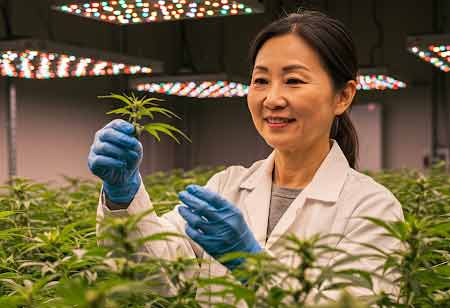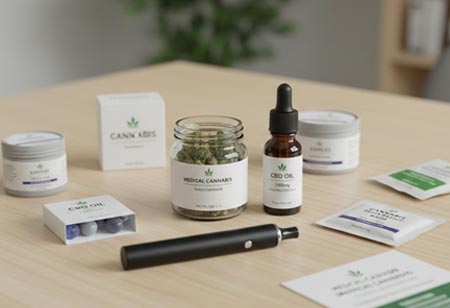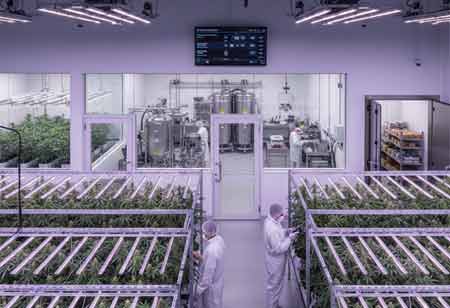Thank you for Subscribing to Cannabis Business Insights Weekly Brief
How the Medical Cannabis Industry Is Shaping the Future of Healthcare

By
Cannabis Business Insights | Wednesday, May 14, 2025
Stay ahead of the industry with exclusive feature stories on the top companies, expert insights and the latest news delivered straight to your inbox. Subscribe today.
The medical cannabis industry represents a rapidly evolving sector within the broader healthcare landscape. Driven by increasing acceptance of cannabis's therapeutic potential and changing regulatory frameworks across various jurisdictions, the industry is experiencing significant growth and transformation.
Cultivation: The Foundation of Medical Cannabis
The cultivation of medical cannabis, a process that requires attention to detail, marks the first and one of the most critical stages in its production lifecycle. This process is not only about growing plants, but also about a commitment to safety and quality, as it strictly complies with quality and regulatory standards. Producers adopt various cultivation methods—indoor, greenhouse, and outdoor—each offering unique benefits and operational considerations.
Indoor cultivation is a realm of precise environmental control, allowing producers to manage temperature, humidity, light exposure, and nutrient delivery with unparalleled accuracy. Advanced techniques such as hydroponics and aeroponics are often employed to enhance yield and ensure consistency. This method significantly reduces the risk of pests, diseases, and contaminants—an essential factor in maintaining pharmaceutical-grade quality.
Greenhouse cultivation offers a hybrid approach, combining natural sunlight with controlled conditions. This method enables a degree of environmental regulation while improving energy efficiency and reducing operational costs compared to fully indoor setups. Greenhouses are particularly advantageous for regions with moderate climates, balancing sustainability with product reliability.
Outdoor cultivation, while the most cost-effective, is highly dependent on geographic and climatic suitability. It exposes crops to natural risks such as pests and weather variability, necessitating stringent post-harvest quality control. Producers who opt for outdoor methods typically cultivate strains adapted to local conditions and employ robust agricultural practices to mitigate risks.
Across all cultivation models, the industry is increasingly prioritizing sustainability. Producers are implementing eco-friendly practices such as water conservation, organic farming, and waste reduction. Moreover, adherence to Good Agricultural and Collection Practices (GACP) is essential to guarantee product traceability, safety, and uniformity—cornerstones in the production of high-quality medical cannabis.
Diversifying Therapeutic Options with Product Development
The medical cannabis industry is evolving rapidly, moving beyond traditional flower products to embrace a wave of innovation in product development. Driven by increased investment in research and development, producers are formulating diverse options tailored to specific patient needs and preferences. Among the most prominent advancements are extracts and concentrates—highly potent formulations created by isolating cannabinoids and terpenes through methods such as CO₂, ethanol, or hydrocarbon extraction. These extracts are refined into oils, tinctures, waxes, and isolates, offering precise dosing and flexible administration routes including oral, sublingual, and vaporized applications.
Edibles represent another expanding category, offering a discreet and often longer-lasting method of consumption. With products ranging from gummies and chocolates to beverages and baked goods, producers are prioritizing palatability and accurate dosing. Topical applications—including creams, balms, and lotions—cater to patients seeking localized relief, particularly for pain and inflammation, without systemic effects. Meanwhile, transdermal patches provide controlled, sustained cannabinoid delivery through the skin, offering an effective alternative for continuous symptom management.
This diversification in medical cannabis formats reflects a growing sophistication in understanding patient requirements. Manufacturers are increasingly developing products with specific cannabinoid and terpene profiles to address targeted symptoms and therapeutic outcomes, reinforcing the sector’s shift toward precision medicine.
Market Dynamics: Growth and Maturation
The medical cannabis market is experiencing steady expansion, fueled by a combination of regulatory advancements, shifting societal attitudes, and a robust scientific validation. One of the primary drivers of this growth is the increasing legalization of medical cannabis across various countries and regions. As legislative frameworks evolve to support its use, the potential patient base widens considerably. Concurrently, there is a notable rise in acceptance among both the public and medical professionals, who are increasingly viewing cannabis as a credible therapeutic option. This change in perception is encouraging more patients to consider cannabis-based treatments and prompting more physicians to recommend them. Additionally, the market is being bolstered by a surge in clinical and scientific research into cannabinoids and terpenes, which continues to uncover their therapeutic potential across a spectrum of medical conditions. This growing body of evidence not only strengthens clinical confidence but also drives innovation in product development. patient demand remains a significant catalyst, particularly among individuals seeking alternative or complementary treatments for chronic pain, neurological disorders, anxiety, and other conditions. This demand is shaping market trends, especially in the development of diverse product formats and personalized cannabinoid formulations.
One of the most promising developments is the rise of precision medicine, where progress in genomics and personalized healthcare is enabling the design of cannabis-based therapies tailored to individual genetic profiles and specific patient needs. Concurrently, the sector is moving toward pharmaceuticalization, marked by the development of standardized, pharmaceutical-grade cannabis formulations as research matures and regulatory frameworks evolve. However, it's the role of technological innovation that truly excites, driving improvements in cultivation techniques, extraction processes, and product formulation, all of which contribute to enhanced efficiency and product consistency. This technological revolution is opening up new possibilities and reshaping the industry. Moreover, the growing emphasis on data-driven insights is allowing researchers and clinicians to better assess the efficacy of cannabis-based treatments across various medical conditions, thereby informing both clinical practice and product development. Increased collaboration among cannabis producers, researchers, and healthcare professionals is expected to strengthen the scientific foundation of the industry and improve patient access to safe, effective, and evidence-based treatments.
The medical cannabis production industry is at the forefront of innovation, developing diverse product offerings and are unwavering in their commitment to adopting and maintaining rigorous quality standards. While navigating a complex regulatory landscape, the industry is driven by increasing patient demand, growing scientific evidence, and the potential to provide therapeutic relief for a wide range of medical conditions. The future promises continued advancements in cultivation, product development, and integration within the broader healthcare ecosystem.






